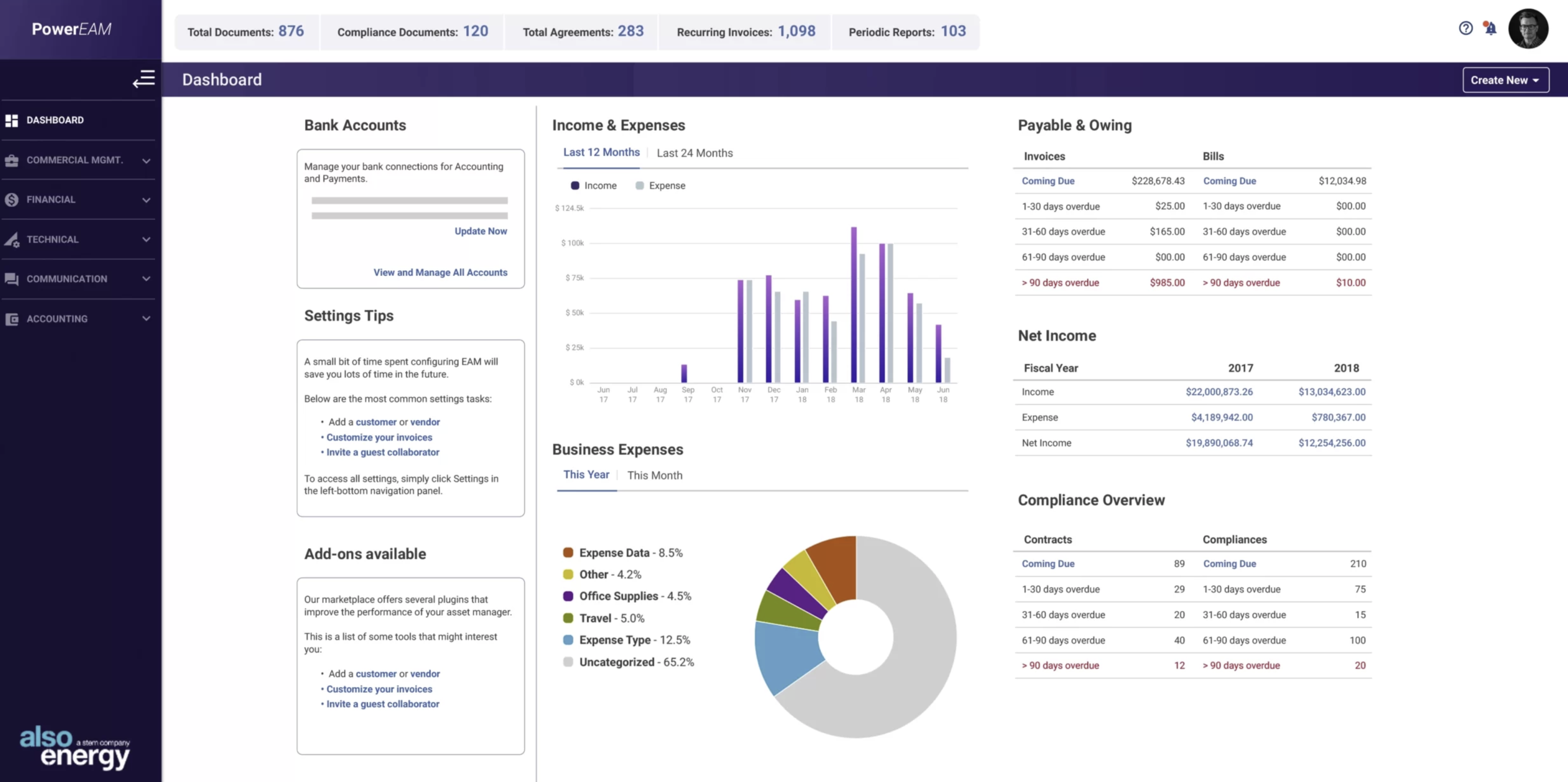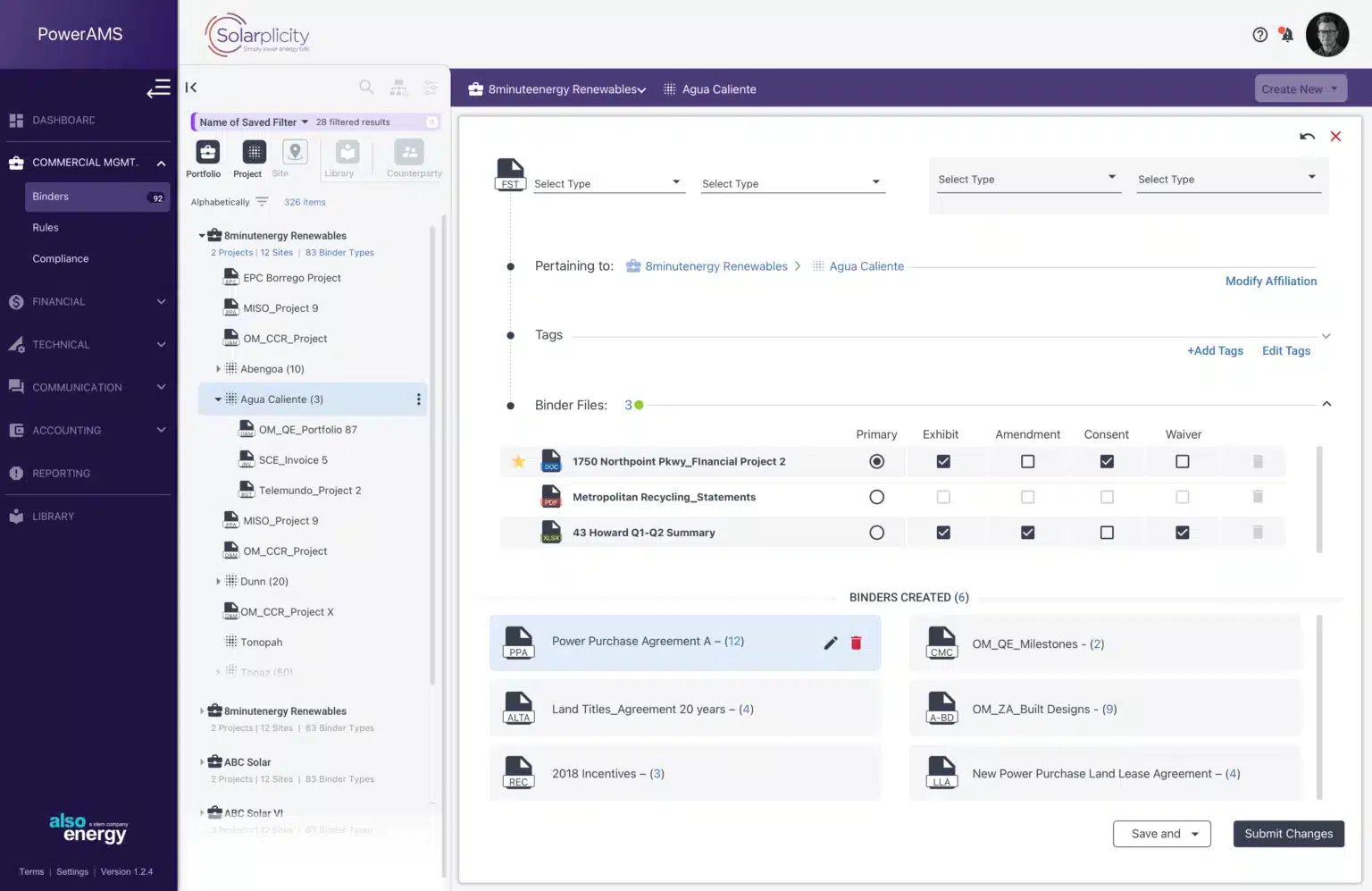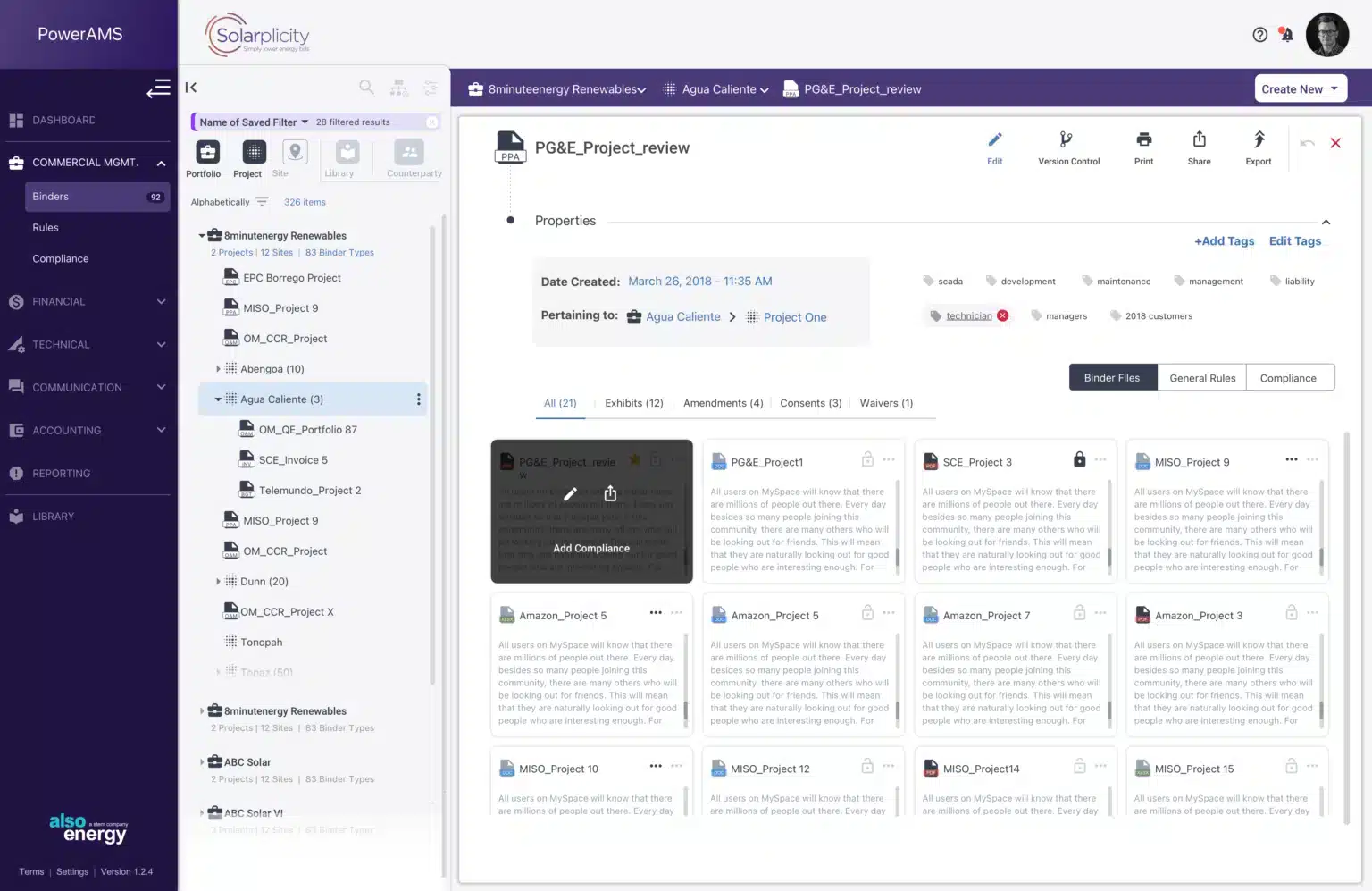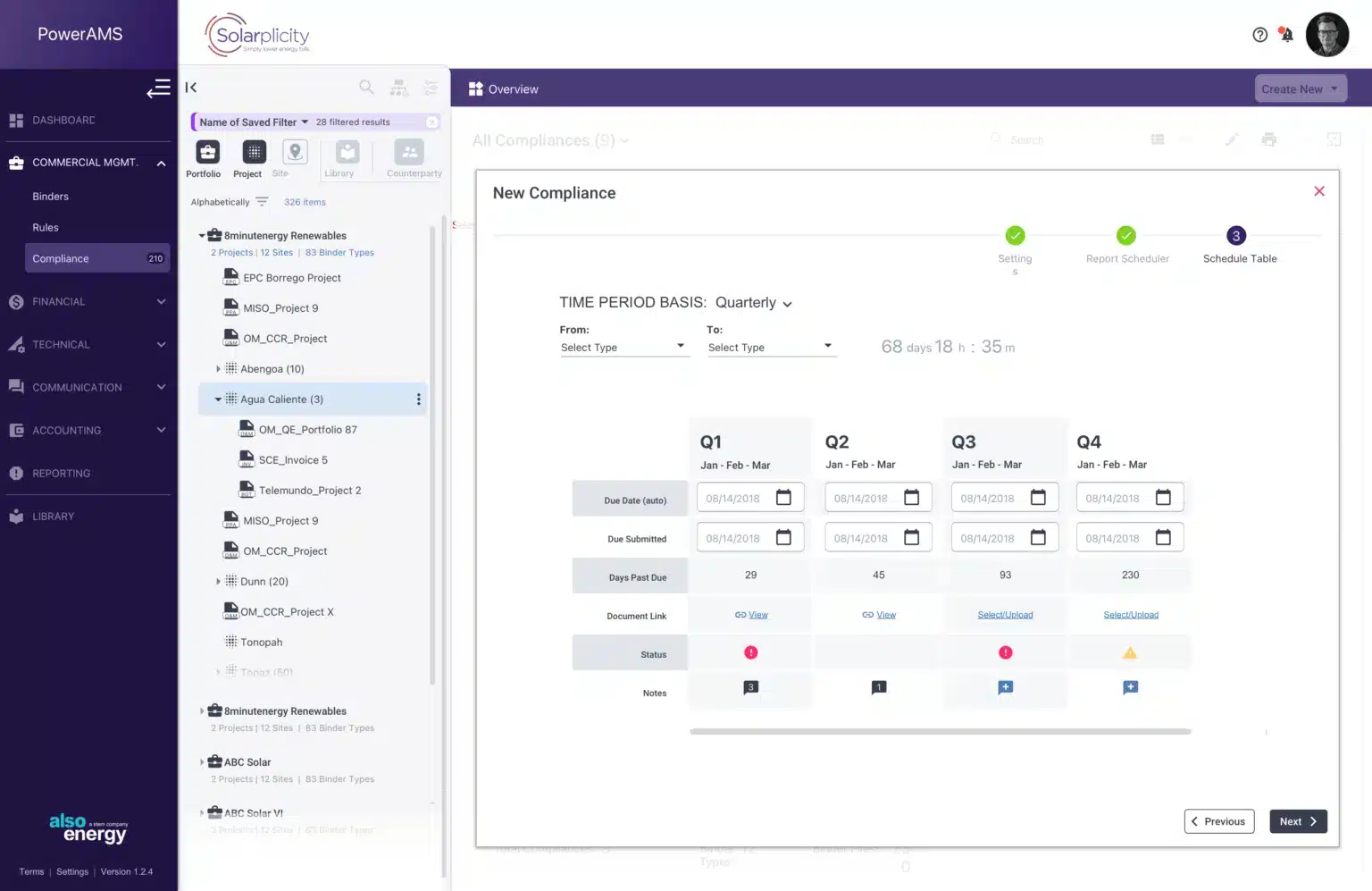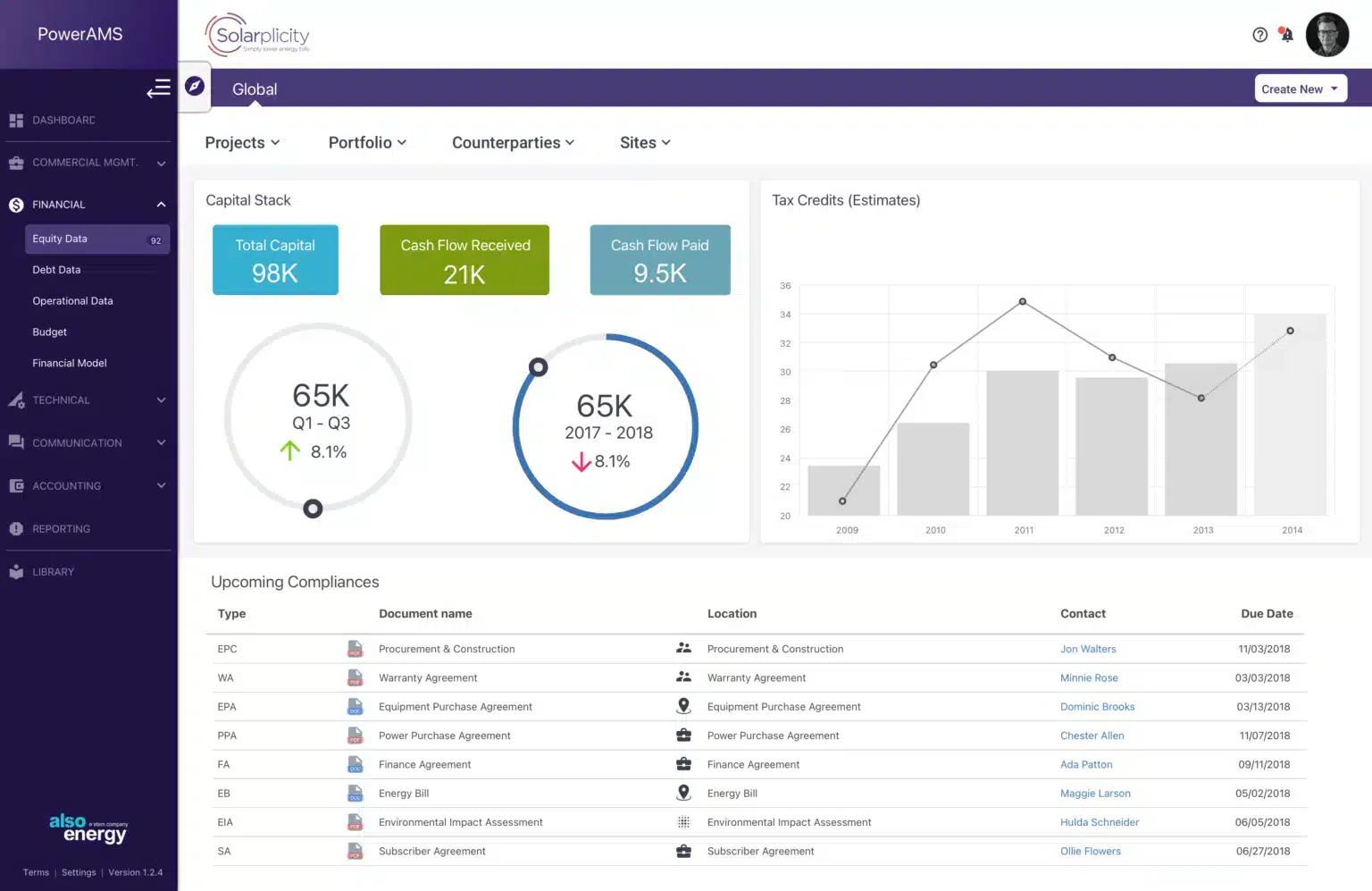PowerAMS™ – Data-Driven Asset Management System for Renewable Energy
A data-driven SaaS platform built from the ground up with a scalable design system, advanced dashboards, and modular React components.
Experience Design & Implementation
Showcasing responsive layouts, UI patterns, and accessibility-compliant components built and deployed in WordPress with Elementor Pro.
Project Overview
AlsoEnergy—a Boulder, CO–based clean energy technology company—develops platforms for solar and wind asset management. PowerTrack is their flagship product for monitoring and optimizing energy generation and efficiency. The Asset Management System (AMS) was conceived as a new module to extend PowerTrack’s capabilities to asset tracking, compliance, and reporting.
As Lead UX/UI Designer & Product Lead, I was responsible for designing AMS from the ground up—conducting research, creating prototypes, and managing design implementation with external contractors and internal developers.
Project Summary
Timeline & Team
18 weeks
Lead UX/UI Designer, External Contractor, React Developer, QA Engineer, AlsoEnergy Stakeholders
Tools & Methodology
Wireframe, Sketch App, Principle, Figma
Iterative UX design and proof-of-concept validation with cross-functional collaboration
Key Deliverables
- • Research documentation
- • POC prototype
- • Wireframes
- • High-fidelity prototypes
- • UI specifications
Performance Metrics
Proof of concept delivered
(validated through stakeholder review)
User testing sessions conducted
(prototype feedback and refinement)
Integration success rate
(seamless merge with existing PowerTrack platform)
Problem Statement
Challenge
- Absence of prior UX or technical blueprint for AMS development.
- Need for deep integration with PowerTrack’s existing data model and reporting tools.
- Limited internal resources, requiring collaboration with an external specialist contractor.
- High demand for visual consistency and usability across modules.
These factors required a structured and research-driven approach to ensure design feasibility and scalability.
Approach
- Market & Technology Research: analyzed energy management solutions to identify gaps and competitive differentiators.
- Proof of Concept (POC): built early integration mockups to validate technical feasibility within PowerTrack.
- Wireframing & Ideation: created low-fidelity flows in Balsamiq and refined structure using Sketch and Principle.
- Prototype Development: produced clickable prototypes for usability feedback from internal stakeholders.
- User Testing: conducted iterative testing cycles to validate asset tracking, compliance uploads, and reporting workflows.
- Design Handoff: delivered specifications and interaction documentation for React JS implementation.
Solution
- Asset Management Interface: centralized control for managing energy assets and documents.
- Compliance Module: enabled users to upload, categorize, and manage deliverables tied to regulatory requirements.
- Binder Library: introduced hierarchical storage for quick access to compliance and asset data.
- Advanced Reporting: added analytics dashboards connecting asset metrics with performance data.
- Consistent UI Language: unified visual system aligned with PowerTrack’s design standards and accessibility guidelines.
Results
- Integration: AMS successfully merged into PowerTrack’s architecture with full data synchronization.
- Usability: early feedback indicated smoother workflows and improved data traceability for asset managers.
- Scalability: AMS architecture positioned PowerTrack as a more comprehensive and competitive product in the clean energy market.
Measurement methods: internal stakeholder reviews, iterative prototype validation, and integration testing reports.
Key Takeaway
Building AMS from scratch required balancing vision and execution—designing a scalable, intuitive system capable of integrating with complex existing data models. The result was a sustainable foundation for PowerTrack’s continued growth as a unified energy management ecosystem.
